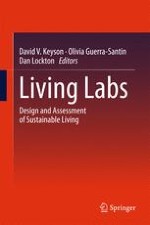2017 | OriginalPaper | Chapter
30. Business Models for Sustainability in Living Labs
Authors : Mike Burbridge, Gregory M. Morrison, Menno van Rijn, Sasha Silvester, David V. Keyson, Lali Virdee, Carolin Baedeker, Christa Liedtke
Published in: Living Labs
Publisher: Springer International Publishing
Activate our intelligent search to find suitable subject content or patents.
Select sections of text to find matching patents with Artificial Intelligence. powered by
Select sections of text to find additional relevant content using AI-assisted search. powered by
